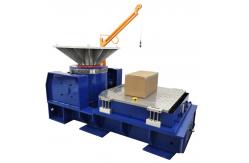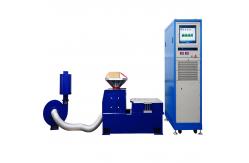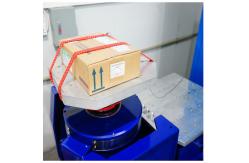Packaging Vibration Testing Equipment Runs Random Vibration Testing For Dummie
|
Detailed Product Description
Packaging Vibration Testing Equipment Runs Random Vibration Testing for Dummie
In the world of product packaging, ensuring that your goods arrive
at their destination in one piece is crucial. Packaging vibration
testing equipment, specifically those that perform random vibration
testing, play a vital role in this process. This article will break
down everything you need to know about such equipment, even if
you're new to the concept. 1. Why Random Vibration Testing for Packaging?
Random vibration testing mimics the erratic vibrations that
packages experience during transportation. Whether it's on a bumpy
truck ride, a jostling train journey, or a turbulent flight,
packages are subjected to a complex mix of vibrations. These
vibrations can cause products to shift, collide with each other, or
even get damaged. By subjecting packages to random vibration
testing, manufacturers can identify potential weaknesses in their
packaging design. For example, they can see if the cushioning
materials are effective, if the product is securely fastened inside
the package, or if the package itself can withstand the forces of
vibration. This helps in reducing product damage during transit,
minimizing returns, and ultimately saving costs. 2. Key Features of Packaging Vibration Testing Equipment
Precise Vibration Generation
The equipment is designed to generate a wide range of random
vibration profiles. It can produce vibrations over a frequency
spectrum that typically spans from 2 Hz to 2000 Hz. This broad
range allows for the simulation of different transportation -
related vibrations. For instance, the low - frequency vibrations
from a large truck's engine can be replicated, as well as the
higher - frequency vibrations from the rattling of a train's
tracks. The amplitude of these vibrations is also precisely
controllable, with a maximum acceleration that can reach up to 100
g and a maximum displacement of ±50 mm. This level of control
ensures that packages are tested under realistic and challenging
conditions. Customizable Test Settings
One of the great things about this equipment is its ability to be
customized. Different packages and products have unique
requirements. You can set the specific frequency distribution,
amplitude levels, and test duration according to your needs. For a
delicate item like a glass vase, you might want to set a lower
amplitude and a longer test duration to ensure its safety. On the
other hand, a more robust product like a toolbox could handle
higher amplitudes and shorter test times. The equipment allows for
this flexibility, providing a tailored testing solution. User - Friendly Interface
Even if you're new to vibration testing, the equipment is designed
to be easy to use. It comes with a user - friendly interface,
usually a PC - based control system with intuitive software.
Operators can easily input the test parameters, start and stop the
test, and monitor the progress in real - time. The software also
provides clear visual displays of important data such as vibration
frequency, amplitude, and the remaining test time. It's like using
a simple computer program, making it accessible to those with
little technical knowledge. Durable and Reliable Construction
The equipment is built to last. It has a robust construction, with
a test platform that is designed to securely hold packages during
testing. The platform is made of high - strength materials that can
withstand the forces generated during vibration testing. Whether
you're testing small packages or large, heavy - duty boxes, the
equipment can handle it. Its reliable construction ensures that you
get consistent and accurate results every time you use it. Specifications
3. How the Equipment WorksSetting Up the TestFirst, you place the package you want to test on the test platform
of the equipment. Make sure it is securely fastened to prevent it
from moving around during the test. Then, using the control
software, you input the desired test parameters. This includes
setting the frequency range, the amplitude of the vibrations, and
the duration of the test. You can choose from pre - set profiles if
you're not sure what values to use, or you can create your own
custom profile based on your product's specific requirements. The Vibration ProcessOnce the test starts, the equipment generates random vibrations.
These vibrations are transmitted to the test platform, which in
turn shakes the package. The random nature of the vibrations means
that the package is subjected to a variety of vibration patterns,
just like it would be during actual transportation. As the package
vibrates, you can observe it through a viewing window (if
available) or monitor the data on the control software. The
software records important information such as the frequency and
amplitude of the vibrations at different times during the test. Analyzing the ResultsAfter the test is complete, you can analyze the results. If the
package and its contents have remained intact and in good
condition, it's a sign that the packaging is likely suitable for
transportation. However, if there are signs of damage, such as
cracks in the package, product displacement, or broken items
inside, it indicates that there are areas that need improvement.
You can use this information to modify your packaging design,
perhaps by adding more cushioning, changing the packaging material,
or improving the way the product is secured inside the package. 4. Applications of Packaging Vibration Testing EquipmentE - commerce PackagingWith the booming growth of e - commerce, ensuring that products
arrive safely at customers' doors is essential. E - commerce
companies use packaging vibration testing equipment to test their
packaging designs. For example, a company that sells electronics
online can test the packaging of its smartphones to make sure they
can withstand the vibrations of being shipped. This helps in
reducing the number of damaged products that are returned,
improving customer satisfaction, and protecting the company's
reputation. Consumer Goods PackagingConsumer goods companies also rely on this equipment. Whether it's
food products, cosmetics, or household items, they need to ensure
that their packaging can protect the products during
transportation. For instance, a food company can test the packaging
of its glass - bottled sauces to make sure the bottles don't break
during transit. By doing so, they can prevent product loss and
maintain the quality of their products. Industrial Product PackagingIndustrial products, such as machinery parts, tools, and industrial
chemicals, often require special packaging. Packaging vibration
testing equipment is used to test the durability of this packaging.
For example, a company that manufactures large industrial machinery
can test the packaging of its components to ensure that they can
survive long - distance transportation. This helps in reducing
production delays caused by damaged products and ensures that the
industrial products reach their destination in working condition. 5. ConclusionPackaging vibration testing equipment that performs random
vibration testing is a valuable tool for any company involved in
product packaging. It's easy to use, customizable, and can help you
identify and fix potential packaging problems. By investing in such
equipment, you can improve the quality of your packaging, reduce
product damage during transit, and ultimately save money. If you're
new to the world of packaging testing, this equipment is a great
place to start. It provides a straightforward way to ensure that
your products are well - protected during their journey from the
factory to the customer. So, don't hesitate to explore how this
equipment can benefit your business. |
||||||||||||||||||||||||||||||||
| Product Tags: Packaging Vibration Testing Equipment Dummie Vibration Testing Equipment Random Vibration Testing Equipment |
Related Products
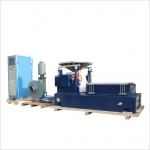
|
20kN Random Vibration Testing Equipment Meets ISTA 6 Testing Standard |
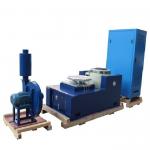
|
Electrodynamic Shaker Systems Runs Sweep Vibration Test Meets IEC 60068 2 6 Vibration Testing |
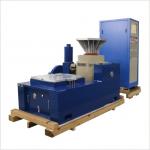
|
20kN Vibration Shaker Machine Performs Shock and Vibration Testing for Automotive Field |
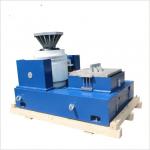
|
High Frequency Vibration Table For Testing Satellite And Spacecraft Components |
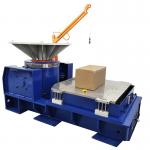
|
Packaging Vibration Testing Equipment Runs Random Vibration Testing For Dummie |

|
Vibration Test Chamber Performs Temperature And Vibration Testing For Automotive Field |
Email to this supplier

